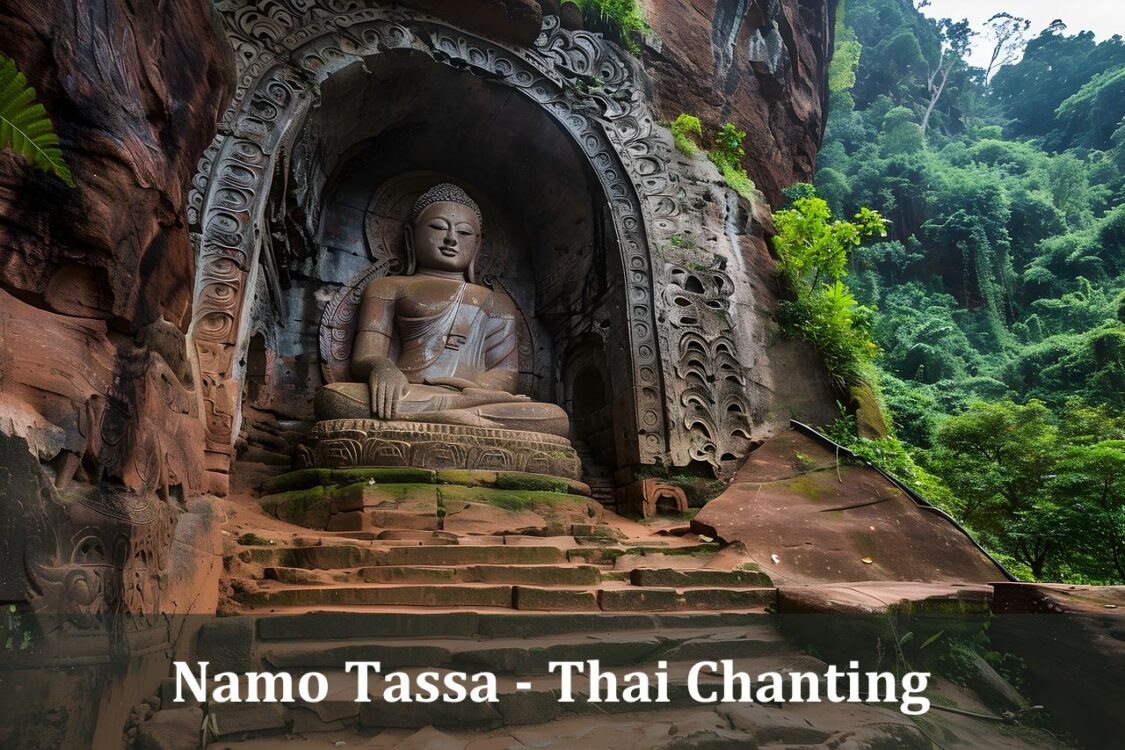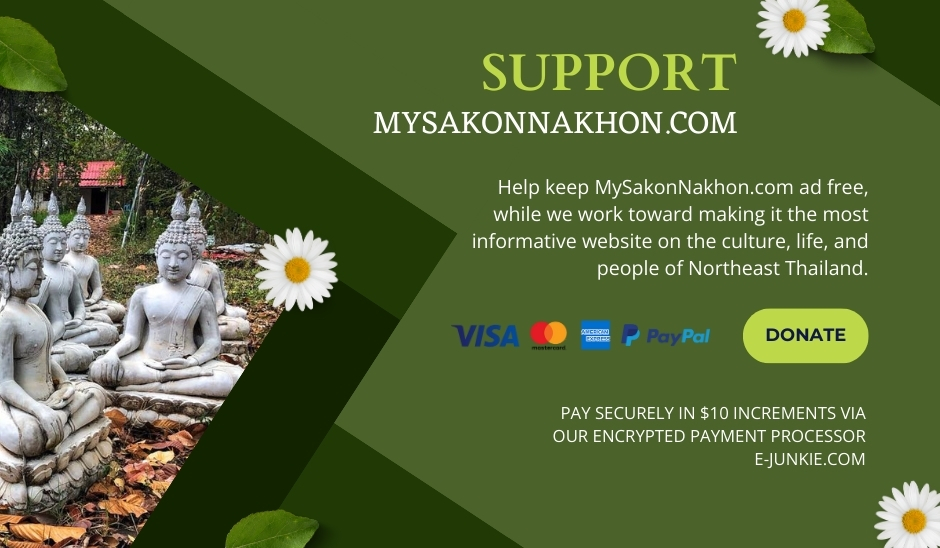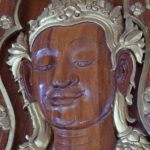
Namo Tassa: Thai Chanting at Temples in Thailand

If you have visited a Thai temple during any kind of ceremony or merit making, you likely have heard monks leading the “Namo Tassa” chant, which is a fundamental recitation in Theravada Buddhism (the religion of Thailand) — and a chant which always precedes any other Thai chanting.
The Namo Tassa comes from the Pali language, and is recited not only in Thailand but by Buddhists worldwide. It’s most commonly written in English as:
Namo Tassa Bhagavato Arahato Sammasambuddhassa
In the Thai language it is spelled:
นะโม ตัสสะ ภะคะวะโต อะระหะโต สัมมาสัมพุทธัสสะ
which when spelled phonetically in English is:
ná-moh dtàssà phá-ká-wá-dtoh a-rá-hà-dtoh săm-maa-săm-phút-thassa
The chant is usually translated as “Homage to the Triple Gem,” as it is always delivered three times. The Triple Gem refers to:
1. The Buddha: The Enlightened One who discovered the path to liberation from suffering.
2. The Dharma: The teachings of the Buddha, which serve as the path to enlightenment.
3. The Sangha: The community of monks, nuns, and lay practitioners who follow the Buddha’s teachings and support each other on the path.
However, the fully translated meaning of the chant is a little different, which is seen when the translation is broken down word for word:
Namo means “homage” or “adoration”.
Tassa means “of him” or “of that”.
Bhagavato means “blessed one” or “exalted one”
Arahato means “worthy one” or “arahant” (perfected one).
Sammasambuddhassa means “fully enlightened one”.
Putting it all together:
Namo Tassa Bhagavato Arahato Sammasambuddhassa translates to: “Homage to the Blessed One, the Worthy One, the Fully Enlightened One.”
This chant is a way for Thai Buddhists to acknowledge the Buddha’s enlightenment, while expressing a deep reverence and devotion to the Buddha as the ultimate guide on the path to liberation from suffering.
The Namo Tassa Delivered as a Song at a Temple Cave in Sakon Nakhon
The Origin of the Namo Tassa Chant
According to legend in Thailand, after the Buddha attained enlightenment under the Bodhi tree, he initially hesitated to teach the Dharma to others, doubting whether anyone would understand his profound insights. As he pondered this, Brahma Sahampati (the Buddha’s spirit guide) appeared before him and implored him to teach, recognizing the potential for human beings to benefit from his wisdom.
The Buddha then decided to teach his first sermon, where he proclaimed the Four Noble Truths and the Noble Eightfold Path. This pivotal moment marked the beginning of the Buddha’s teaching career and the spreading of the Dharma.
Following this momentous occasion, it’s said that the five great “Deva” (เทวะ) gods descended from the heavens to earth to pay homage to the newly enlightened Buddha.
These five Gods in Thai tradition are:
Satakiri Yak (สาตาคิรียักษ์): A mountain deity, who began the homage with “Namo”.
Phra Rahu (พระราหู): Ruler of the demon world, who followed with “Tassa”.
Jatu Maharat (จาตุมหาราช): Ruler of the 4 directions, who spoke “Bhagavato”.
Phra Indra (พระอินทร์): Lord of the gods, who added “Arahato”.
Thao Maha Phrom (ท้าวมหาพรหม): Lord Brahma (the creator god) who finished the homage with “Sammasambuddhassa”.
The followers of the Lord Buddha heard this heavenly chant, and have been reciting it ever since.
So, if you would like show respect to the Buddhist faith and join the Thai chanting at a temple in Thailand, the “Namo Tassa” chant is a simple and easy one to learn that will be part of any ceremony.
- The Royal Ploughing Ceremony in Thailand – A History - May 8, 2024
- Dying Well the Buddhist Way in Thailand - May 7, 2024
- Comforting Words for the Brokenhearted in Thailand - May 6, 2024




